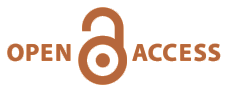Drug Prescription Pattern in Patients with Rheumatoid Arthritis in a Tertiary Care Teaching Hospital
Volume 9 ; Issue 1 ; in Month : Jan-June (2025) Article No : 185
Rajalakshmi GR, Jayeshkumar P, Anusree AT, et al.
Abstract
Rheumatoid arthritis is a chronic autoimmune disorder that mostly affects joints. RA occurs when the immune system, which normally helps to protect the body from infectious diseases, attacks its own tissue. The disease causes pain, swelling, stiffness and loss of functions of the joint. Our study “Drug prescription pattern in patients with Rheumatoid arthritis in a tertiary care teaching hospital” (Cross-sectional study) aimed to identify the common medications prescribed for RA and to assess the ADRs associated with Anti- Rheumatoid drugs. This cross- sectional study was conducted in 121 patients who were given DMARD therapy. Patients’ demographic details, category of drugs used in the treatment, assessment of rationality of prescription, type of therapy (mono, dual or polytherapy) and causality assessment of ADRs of DMARDs were (Naranjo Algorithm) recorded. Our study concluded that the most commonly prescribed DMARDs was Methotrexate. According to demographic data out of 121 patients enrolled. Majority of them were females (91.73%, n=111) and only 8.26% n=10 male. Most of the patients belonged to the 41- 50 age group (n=35, 28.92%), only 2 patients belonged to the 11- 20 age group. Most of the RA patients were suffered from co- morbidities (n= 39, 32.2%), and 82 have no co- morbidities (n=82, 67.77%) and we observed that (prescription pattern of DMARDs) majorities of patients were received 2 DMARDs (n= 52, 42.97%) and 13 patients (n= 13, 10.74%) were received polytherapy. As per monotherapy, Methotrexate was given to majorities of the patients (n= 35, 67.3%) followed by HCQ (n= 13, 25%) Leflunomide (n= 3, 5.76%) and Sulfasalazine (n= 1, 1.9%). In dual therapy, Methotrexate (MTX) and HCQ were given to the majority of patients (n= 31, 55.3%) and in poly therapy MTX and HCQ and Sulfasalazine combinations were given to 9 patients (69.23% n=9). Other drugs given along with DMARDs are steroids (n= 96, 79.33%), NSAIDs (n= 40 33.05%) and supplementary drugs like folic acid was given to (n= 98, 80.99%) and PPIs were given to (n= 27, 22.3%) of patients. As per Naranjo’s Algorithm, 31 patients (n= 31 25.6%) had experienced ADR and 90 patients (n= 90, 74.3%) had experienced no ADR.Full Text Attachment
Views : 455 Downloads : 11
RSS

